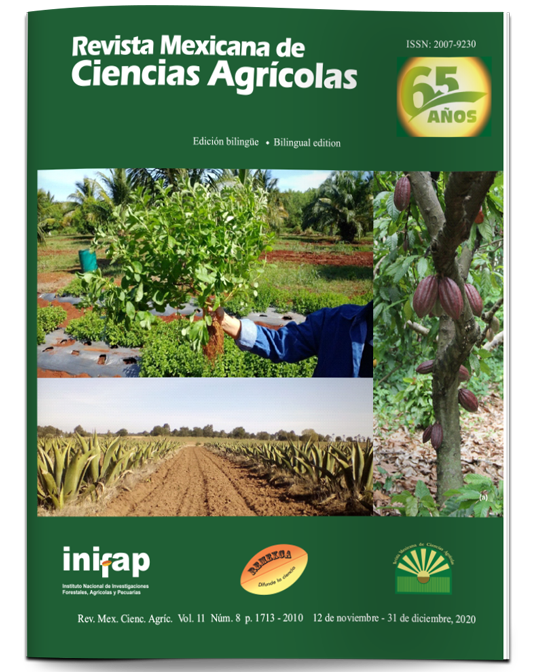Updating the soil mapping of the State of Mexico: a planning tool
DOI:
https://doi.org/10.29312/remexca.v11i8.1975Keywords:
digital cartography, municipality, soils, updateAbstract
The soil is a very important natural body for the development of crops and plant species, because it provides support to the roots of plants, it also provides nutrients for their development and production, depending on the type of soil and its properties. Knowing and quantifying soils is necessary to plan agricultural, livestock, forestry, urban, mining and conservation activities. The objectives of this work were: 1) to update the 1:50 000 soil mapping per municipality in the State of Mexico; and 2) quantify the surface of the soils and know their location to identify areas of productive reconversion. The cartography was generated with the digitization of the 1:50 000 scale soil charts, with a geographic information system (GIS), its database was generated: primary soils, secondary soils, physical phase, chemical phase and texture; this database was updated to the 2015 WRB soils version. The soils with the largest and most productive areas are: Andosols with 479 908 ha, Pheozems with 472 718 ha, Vertisols with 241 485 ha and Cambisols with 196 047 ha. These predominate in the municipalities of Aculco, Toluca, Acambay, Jilotepec, Axapusco, Ixtlahuaca and Almoloya de Juárez.
Downloads
Published
How to Cite
Issue
Section
License
Copyright (c) 2020 Revista Mexicana de Ciencias Agrícolas

This work is licensed under a Creative Commons Attribution-NonCommercial 4.0 International License.
The authors who publish in Revista Mexicana de Ciencias Agrícolas accept the following conditions:
In accordance with copyright laws, Revista Mexicana de Ciencias Agrícolas recognizes and respects the authors’ moral right and ownership of property rights which will be transferred to the journal for dissemination in open access. Invariably, all the authors have to sign a letter of transfer of property rights and of originality of the article to Instituto Nacional de Investigaciones Forestales, Agrícolas y Pecuarias (INIFAP) [National Institute of Forestry, Agricultural and Livestock Research]. The author(s) must pay a fee for the reception of articles before proceeding to editorial review.
All the texts published by Revista Mexicana de Ciencias Agrícolas —with no exception— are distributed under a Creative Commons License Attribution-NonCommercial 4.0 International (CC BY-NC 4.0), which allows third parties to use the publication as long as the work’s authorship and its first publication in this journal are mentioned.
The author(s) can enter into independent and additional contractual agreements for the nonexclusive distribution of the version of the article published in Revista Mexicana de Ciencias Agrícolas (for example include it into an institutional repository or publish it in a book) as long as it is clearly and explicitly indicated that the work was published for the first time in Revista Mexicana de Ciencias Agrícolas.
For all the above, the authors shall send the Letter-transfer of Property Rights for the first publication duly filled in and signed by the author(s). This form must be sent as a PDF file to: revista_atm@yahoo.com.mx; cienciasagricola@inifap.gob.mx; remexca2017@gmail.
This work is licensed under a Creative Commons Attribution-Noncommercial 4.0 International license.



